- The mission of Big Bend Community College is to serve the educational needs of a diverse population throughout its service district. As a comprehensive two-year community college, the institution works with its partners to provide a variety of educational opportunities, including courses and training for university and college transfer, occupational and technical programs, basic skills and developmental education, community and continuing education, pre-employment and customized training for local business and industry and support services for students.
School Highlights
Big Bend Community College serves 2,584 students (55% of students are full-time).
The college's student:teacher ratio of 12:1 is lower than the state community college average of 15:1.
Minority enrollment is 57% of the student body (majority Hispanic), which is more than the state average of 56%.
Quick Stats (2025)
- Enrollment: 2,584 students
- In-state tuition: $4,150
- Out-state tuition: $4,550
- Student:teacher ratio: 12:1
- Minority enrollment: 57%
- Source: Verified school update
Top Rankings
Big Bend Community College ranks among the top 20% of public schools in Washington for:
School Overview
The teacher population of 214 teachers has stayed relatively flat over five years.
Big Bend Community College
(WA) Community College Avg.
Carnegie Classification
Associate's Colleges: Mixed Transfer/Career & Technical-Mixed Traditional/Nontraditional
Baccalaureate/Associate's Colleges: Associate's Dominant
Institution Level
Four or more years
Four or more years
Institution Control
Public
Public
Total Faculty
214 staff
353 staff
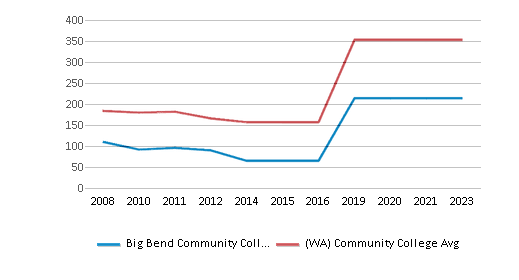
School Calendar
Student Body
The student population of Big Bend Community College has grown by 21% over five years.
The student:teacher ratio of 12:1 has increased from 9:1 over five years.
The Big Bend Community College diversity score of 0.62 is less than the state average of 0.75. The school's diversity has stayed relatively flat over five years.
Total Enrollment
2,584 students
4,711 students
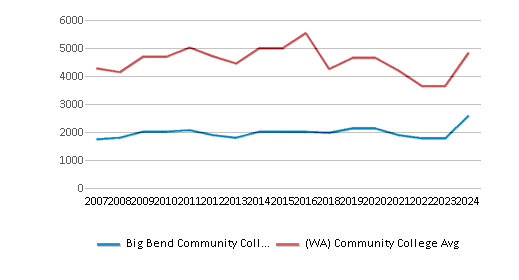
Student : Teacher Ratio
12:1
15:1

# Full-Time Students
1,419 students
2,028 students
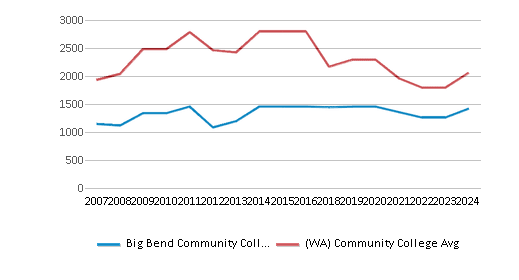
# Part-Time Students
1,165 students
3,179 students
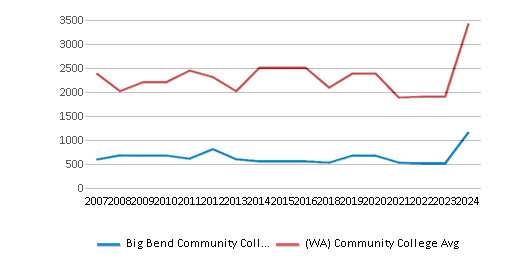

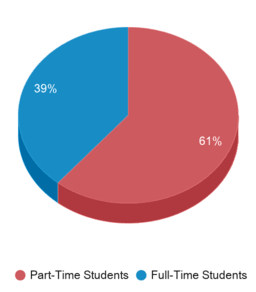
# Enrollment Undergraduate
258 students
494 students
# Full-Time Undergraduate Students
1,419 students
2,028 students
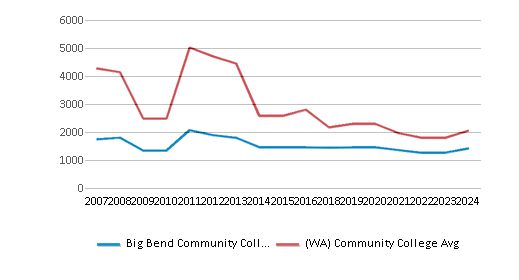
# Part-Time Undergraduate Students
1,165 students
3,179 students
Total Dormitory Capacity
200 students
140 students
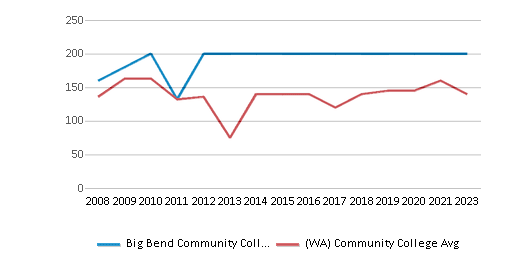
% American Indian/Alaskan
n/a
1%
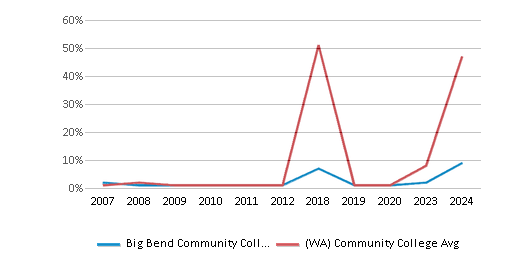
% Asian
1%
10%
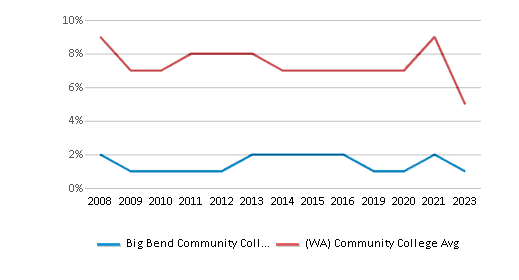
% Hispanic
44%
17%
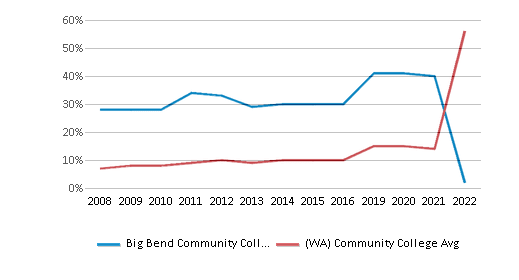
% Black
1%
7%
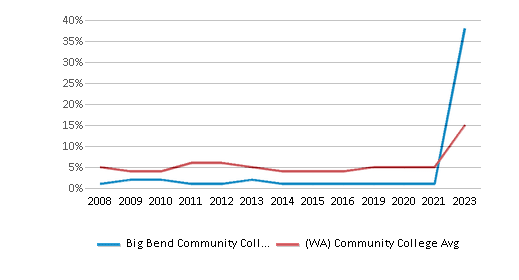
% White
43%
44%
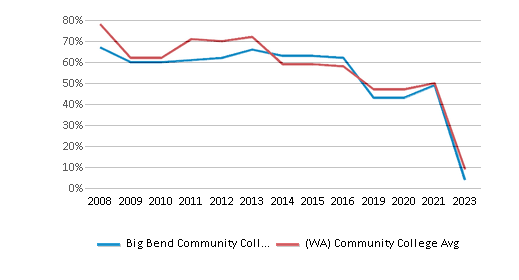
% Hawaiian
2%
1%
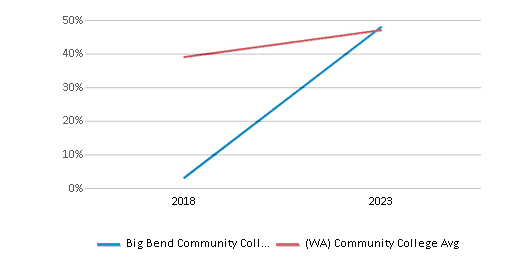
% Two or more races
3%
8%

% Non Resident races
n/a
3%
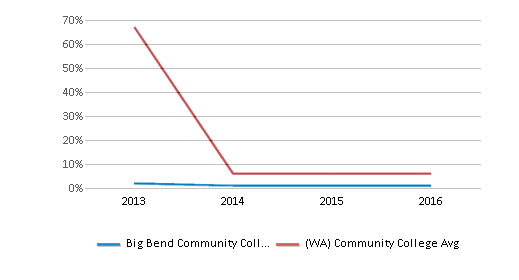
% Unknown races
6%
9%
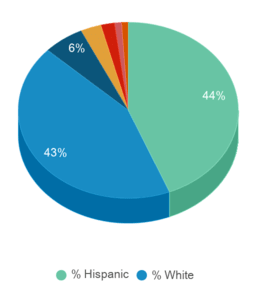
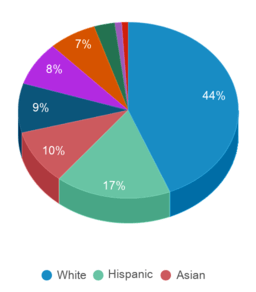
Diversity Score
0.62
0.75
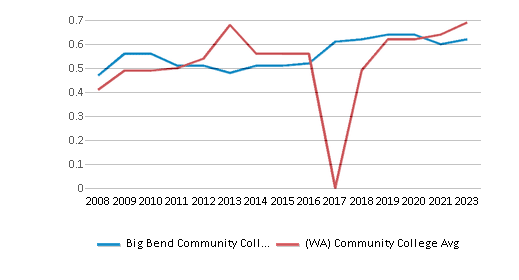
College Completion Rate (Students who graduate in less than 4 years)
37%
0.5723%
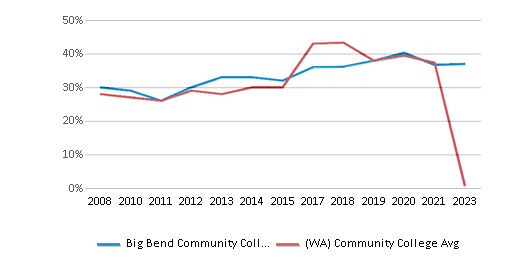
College Completion Rate (Students who graduate in 4 years or more than 4 years)
0.4025%
0.3584%
Average Graduate Earnings (10 Years)
$37,900
$36,400
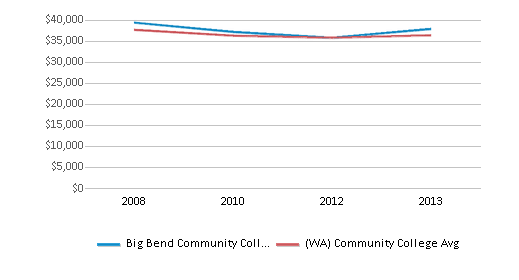
Tuition and Acceptance Rate
The public in-state tuition of $4,150 is more than the state average of $4,105. The in-state tuition has declined by 7% over four years.
The public out-state tuition of $4,550 is less than the state average of $7,359. The out-state tuition has declined by 7% over four years.
In-State Tuition Fees
$4,150
$4,105
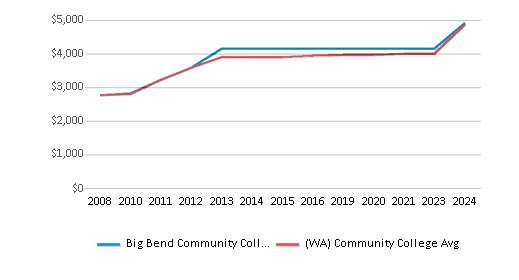
Out-State Tuition Fees
$4,550
$7,359
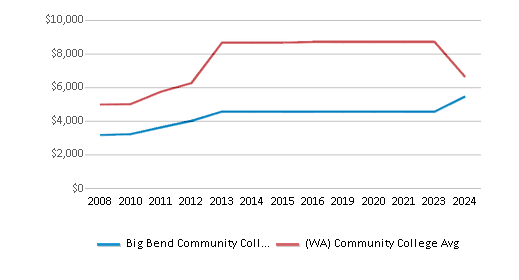
% Students Receiving Some Financial Aid
70%
58%
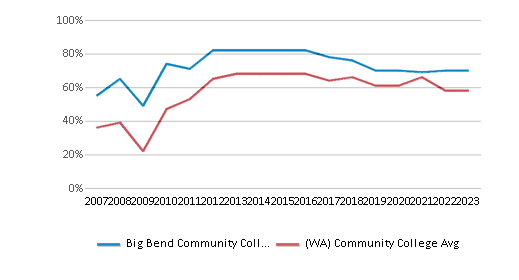
Median Debt for Graduates
$10,505
$11,794

Median Debt for Dropouts
$6,292
$6,192
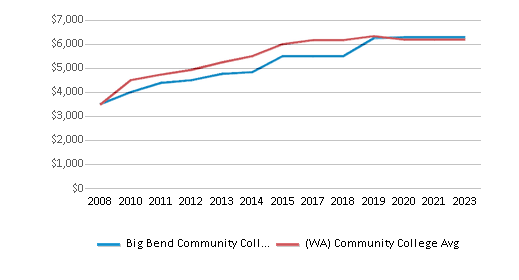
Acceptance Rate
n/a
99%
Source: 2024 (or latest year available) Integrated Postsecondary Education Data System (IPEDS)
School Notes
- BBCC is one of the smallest community colleges in Washington State, yet it serves one of the largest rural districts of 4,600 square miles. The service district includes all of Grant and Adams Counties and the Odessa School District in Lincoln County. Big Bend Community College was authorized by the Washington State Board of Education in 1961. Beginning fall quarter 1962 BBCC held its first regular classes at night in Moses Lake High School. The college opened classes in a new facility located a short distance southeast of the city of Moses Lake fall quarter 1963. In 1966, BBCC acquired a 159-acre tract of land on the former Larson Air Force Base, which became the permanent college campus for all programs in 1975. Since 1962 our six-fold mission of college transfer, vocational and developmental education, community service/continuing education, business and industry partnerships, and student support services has provided the environment for their success. BBCC offers the Associate in Arts and Science (AA&S) DirectTransfer Agreement (DTA) degree, the Associate in Science (AS) degree, the Associate in Pre-Nursing DTA/MRP (Major Ready Pathway) degree, the Associate in Applied Science-Transfer (AAS-T) degree, the Associate in Applied Science (AAS) degree, the Associate in General Studies (AGS) degree and the Certificates of Achievement and Accomplishment. Big Bend Community College is accredited by the Northwest Commission on Colleges and Universities. Its transfer credits are normally accepted by other accredited colleges.
Frequently Asked Questions
How much does Big Bend Community College cost?
Big Bend Community College's tuition is approximately $4,150 for In-State students and $4,550 for Out-State students.
What is Big Bend Community College's ranking?
Big Bend Community College ranks among the top 20% of community college in Washington for: Least expensive tuition and Highest completion rates.
Recent Articles

Obtaining Your Bachelor's Degree at a Community College
Explore the evolving landscape of community colleges offering bachelor's degrees, addressing affordability, accessibility, and workforce needs.

A to Z of Community College Certificates and Courses
From business and healthcare to technology and skilled trades, the article showcases the breadth of options available to students seeking to enhance their knowledge, develop new skills, or pursue career advancement.

What is a Community College?
This comprehensive guide explains what a community college is, its history, and its role in higher education. It covers the types of programs offered, differences from four-year colleges, benefits of attending, and important considerations for prospective students, providing valuable insights for those exploring educational options.









